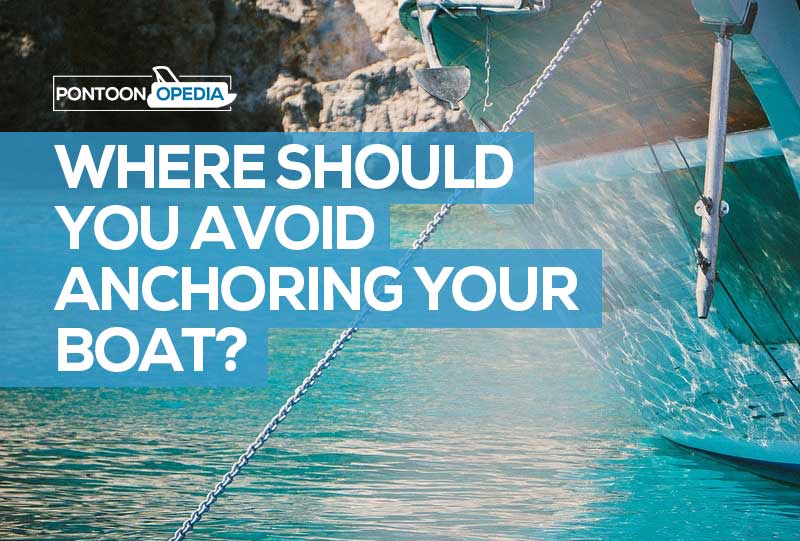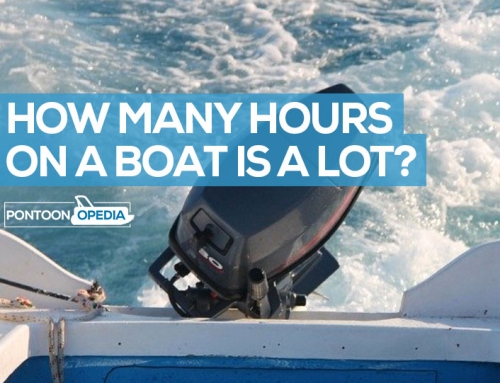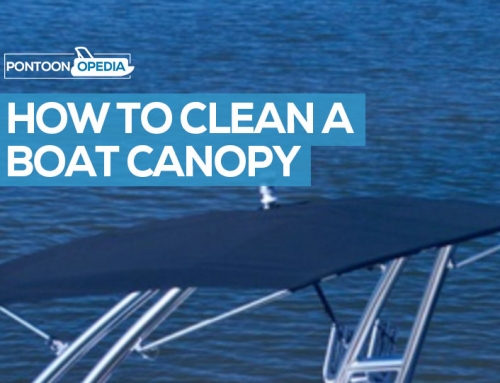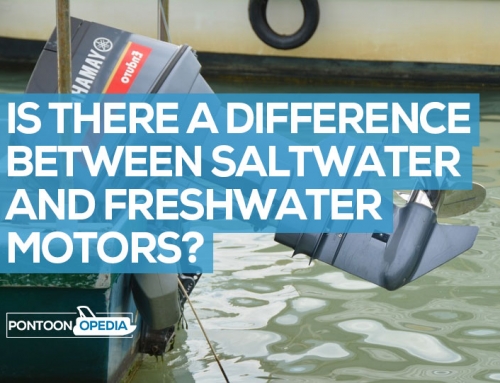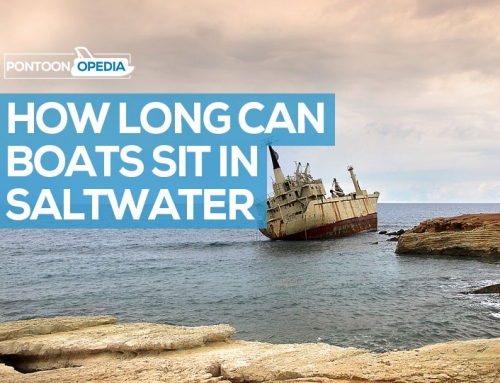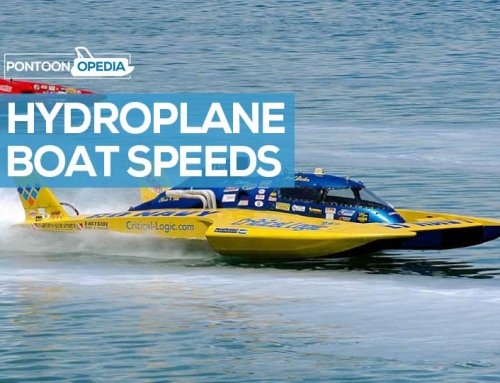Being out on the water in your boat is a marvelous thing. It truly allows you to appreciate nature and just relax. One of the most technically challenging aspects of boating comes down to anchoring. Ultimately, it means that you don’t have to rely on marinas or moorings. Knowing where not to anchor can be difficult, but it’s an essential skill. I’ve put together this short guide which tell you what should be avoided when anchoring.
Where should you avoid anchoring your boat?
There are a few places and/or situations that you should avoid anchoring your boat. The areas and situations you should avoid anchoring your boat include:
- Lee shore – this is when the wind is coming off the water onto the land. Ultimately, when the wind is coming off the water and onto the land, it can push your boat towards the land causing damage.
- Fairways.
- Channels.
- Prohibited areas.
- Oyster beds
- Mussel beds.
- Restricted areas.
- Sea beds that aren’t suitable for your anchor.
- Depths that aren’t suitable for your cable/scope.
Sea beds
Just like the land changes, the bottom of the sea bed changes as well. There are a variety of types that can impact the suitability of anchoring your boat. You should always check the sea bed to ensure that it is a good place to anchor, or a place that you should be avoiding.
Sea bed varieties:
- Mud – good for most anchor types but those with a large surface area will be more reliable.
- Silt-good for most anchor types.
- Clay-once set, holding is good for most anchors, anchor with sharp tip will set more readily.
- Sand- isn’t ideal as it is variably, depending on sand hardness but anchor with large surface area is preferable.
- Gravel, rock, weed-bottom types generally unsuitable for anchoring as they aren’t very reliable.
Your anchor and cable
No matter what you should also be sure to check the condition of your anchor and the cable. You need to ensure that there are no damages and that they can be easily and quickly deployed.
Don’t forget your cable needs to be attached to your boat, by a lashing or split pin. You need to avoid a shackle as it can prevent you from being able to quickly and easily lose your anchor and cable if the situation arises.
Did you know? Any rope that is used for mooring or anchoring is called warp.
You can use a combination of rope and chain for your cable. The chain must be located between the anchor and the warp only and should always be around 10meters. Otherwise you can just use warp from your anchor to your boat.
Depth and cable
With anchoring you need to be certain that you have enough cable for the depth you are in. Will you be afloat at low tide? Will there be enough cable to remain anchored at high tide? Is there enough clearance under the keel at low tide? You need to be aware of all these possible circumstances to ensure you let out a sufficient amount of cable. The process of letting out the correct amount of cable is called veering. This is an important part to ensure you are securely anchored and stay anchored down.
You need to be able to know how much cable you are veering without having to measure every single meter. It is best to mark your cable every 5 meters. You can do this by marking the cable – ideally, you need to find a system that works for you, but here are a couple options to mark your cable:
- Use silk ties on chain
- Thread silks through warp
- Thread coloured cotton around warp
- Avoid any method of marking that will fade or come off – ie pen markings
Once you are able to effectively mark your cable you need some sort of code so you can understand what the markings mean. A few common codes to understanding your marking include:
- Use the alphabet – Have the markings in the alphabetic order of the colour – ie. black, blue, brown, green, indigo, pink, red etc.
- Use the rainbow – Have markings using the rainbow – ie red, orange, yellow, green, blue, indigo, violet
- The order one pots snooker balls – ie. red, yellow, green, brown, blue, pink, black etc.
If you get to the end of what your code is but you still need to mark cable, just simply double up! So, you will have two silk ties, or two cotton markings that signify the next stage. For example (using rainbow method): 5m red, 10m yellow, 15m orange, 20m green, 25m blue, 30m indigo, 35m violet, 40m two red, 45m, two yellow etc.
Anchor types
Each boat is different and this can influence the type of anchor you have. You should always check the recommended anchor weight and gauge of chain/warp for your boat tonnage. You need to be able to trust that the anchor and cable are going to be able to hold your vessel securely.
The anchor types are:
- Bruce – This anchor is easy to handle and holds well in mud, rock and sand. It is best that you buy a genuine one that is oversized to ensure you stay anchored.
- CQR or plough – This type of anchor is ideal to stow on a bow roller as it can be a little awkward on a deck. It holds well in mud and sand.
- Delta – This is also a plough shaped anchor, however it has a little bit of a different design. Great for stowing on a bow roller and a good power to weight ratio. It is ideal for sand and mud sea beds.
- Danforth – This anchor is an excellent back up as it stows flat and has a great weight to power ratio. It is very popular for being used as a kedge anchor. It is suitable for most sea beds, however, it can be hard to break out of mud. Another thing to bear in mind is that is it prone to pull out if the wind or current reverses due to it’s design as it can jam and does not reset.
- Fishermans – This is the typical anchor you see in pictures. It is good for rocky sea bottoms and dense weeded seabeds. It can be rather heavy and awkward to maneuver. Avoid using this anchor type in sand and mud as it isn’t the best.
- New generation anchors – Just like most things, when something new comes about it will usually outperform the dated model and that is no different when it comes to anchors. The below anchors are new generation anchors that will do what you need it too:
- Saraca Excel (convex)
- Manson Supreme (hooped)
- Mantus (hooped)
- Rocna (hooped)
- Manson Boss (concave, no hoop)
- Spade (weight tip)
- Vulcan (weighted tip)
- Ultra (weighted tip)
Where to anchor?
When it comes to choosing where you should anchor there are many things that you need to consider. If you can look or even try to find some recommended anchoring spots. These can be found on chart and are shown by an anchor symbol. Spots that should not be anchored in are shown by an anchor with a cross through it.
Remember you should avoid anchoring lee shore even if the chart has an anchorage symbol! Anchoring lee shore can become a disastrous situation. Instead, always anchor on a shore where the wind is coming off of the land.
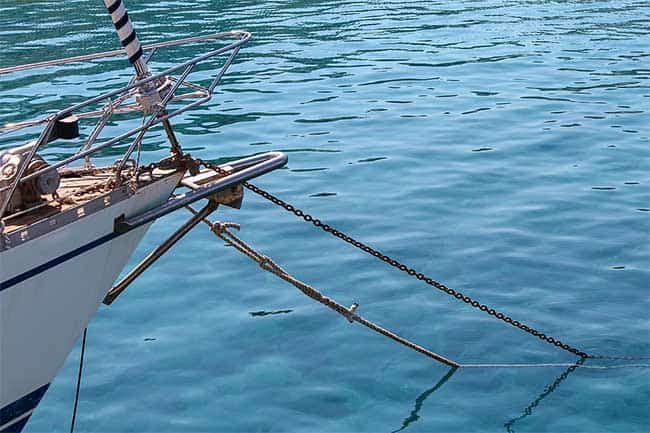
Where should you avoid anchoring a boat?
Look for a location that has some sort of shelter. This allows you to be protected from wind, waves and possibly intense tidal streams. Any sort of protection from the elements can assist in keeping your boat securely anchored as it minimizes additional strain the anchor and cable has to go through.
Keep the forecast in mind, especially if you are going to be anchored for a few hours or overnight. The wind can change direction, the tide can change or even the overall weather can vary. Keeping the forecast in mind can allow you to avoid areas where you will be prone to the changes of weather, tide or wind which could see you dragging or even position you on a lee shore.
Remember to avoid lee shore, oyster/mussel beds, fairways, channels etc. Never try kidding yourself that you are securely anchored in. If you aren’t sure, redo it and do it again if you need to. Anchoring isn’t always easy, but it needs to be done right. Happy boating, stay afloat and anchored down!
Related questions about anchoring
How do you dislodge a stuck anchor?
There are a couple methods you can try to dislodge a stuck anchor. This includes:
- Short Haul – Pull the line so you are directly above the anchor. Hold the warp tight (just be careful if your warp is rough) as your boat dips down into the trough. Then as the boat rises on the crest of the next wave, it may free the anchor due to the tension.
- Ring Ding – This is when you snap the retrieval ring and buoy around the cable. Then you drive past the anchor at roughly a 45 degree angle. This uses the float and ring as a pulley, combined with the pull of the boat can free the anchor. Remember to be extremely careful when moving your boat while tethered
- Cut your losses – Sometimes no matter what you try, your anchor isn’t going to let up. Either cut the warp short so it doesn’t cause a nuisance to other boaters, or attatch a boy to the end of the line and come back for it later. Just make sure you do go back for it!
What is the best way to retrieve an anchor?
The most commonly used method of retrieving an anchor is to simply pull the cable in until you are above the anchor. Then you should be able to just pull the anchor straight up.
You might also like:

